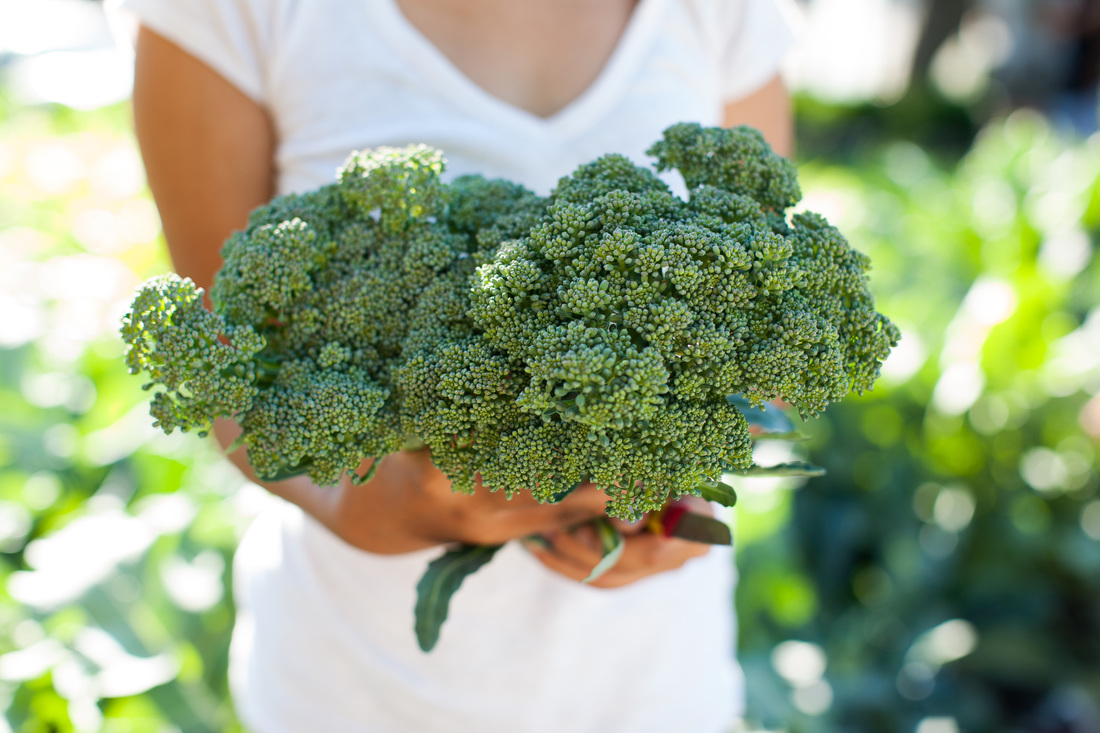Authored by Jesse Haas, CNS, LN
Eating seasonally available foods is a hallmark for traditional and holistic medicine. From Ayurveda to Traditional Chinese medicine, Western herbalism to North American tribal medicine, this simple concept provides the foundation for vibrant health to build on. It's a practice that helps keep our internal environment in harmony with our external environment as the seasons shift and change throughout the year.
When we pay attention to our surroundings and what's available, nature provides nutrients that we need most in different times of year - that may sound super hippy woo woo, but stick with me. Asparagus and spring greens like nettles, spinach and arugula aid detoxification of the heavy foods we've been craving and eating all winter long. This time of year, we crave a lightness that salads provide, and that match the physiological need to shed that excess winter weight. Summer foods like tomatoes, cucumbers and melons are rich sources of electrolytes that balance the heat and salt loss from sweating. We harvest storage crops like onions, carrots and winter squash in the fall. These slightly sweet and satisfying roots and starchy vegetables make delicious soups, stews and casseroles - warm, hearty, grounding foods that allow us to easily pack on a few pounds for added insulation in preparation for the cold winter months. These foods also sustain us in the north, where fresh fruits and vegetables are harder to come by December through April.
In addition to supporting our individual health balance, we have the opportunity to support local farmers when we choose to plan our annual eating around seasonal and locally grown produce. We're losing thousands of acres of arable land every year to housing and commercial development. By buying food from local producers, we're able to keep these folks farming and invest in healthy food for future generations.
There is an environmental benefit to buying locally and eating seasonally, as well. The average American meal consists of ingredients from 5 different countries...which means fossil fuels are being spent in excess to transport fresh produce, as well as other consumables, from one side of the planet to the other. In fact, 10% of the fossil fuels consumed in the U.S. are used in the production, transportation, storage and distribution of food. Buying locally grown foods definitely reduces your fossil fuel consumption, a benefit that is amplified when you bike or walk to the grocery store or farmers market.
You can find seasonal and locally grown fruits and vegetables at farmers markets and our local grocery co-ops. To find a farmers market near you, follow this link to the Minnesota Grown Directory.
When we pay attention to our surroundings and what's available, nature provides nutrients that we need most in different times of year - that may sound super hippy woo woo, but stick with me. Asparagus and spring greens like nettles, spinach and arugula aid detoxification of the heavy foods we've been craving and eating all winter long. This time of year, we crave a lightness that salads provide, and that match the physiological need to shed that excess winter weight. Summer foods like tomatoes, cucumbers and melons are rich sources of electrolytes that balance the heat and salt loss from sweating. We harvest storage crops like onions, carrots and winter squash in the fall. These slightly sweet and satisfying roots and starchy vegetables make delicious soups, stews and casseroles - warm, hearty, grounding foods that allow us to easily pack on a few pounds for added insulation in preparation for the cold winter months. These foods also sustain us in the north, where fresh fruits and vegetables are harder to come by December through April.
In addition to supporting our individual health balance, we have the opportunity to support local farmers when we choose to plan our annual eating around seasonal and locally grown produce. We're losing thousands of acres of arable land every year to housing and commercial development. By buying food from local producers, we're able to keep these folks farming and invest in healthy food for future generations.
There is an environmental benefit to buying locally and eating seasonally, as well. The average American meal consists of ingredients from 5 different countries...which means fossil fuels are being spent in excess to transport fresh produce, as well as other consumables, from one side of the planet to the other. In fact, 10% of the fossil fuels consumed in the U.S. are used in the production, transportation, storage and distribution of food. Buying locally grown foods definitely reduces your fossil fuel consumption, a benefit that is amplified when you bike or walk to the grocery store or farmers market.
You can find seasonal and locally grown fruits and vegetables at farmers markets and our local grocery co-ops. To find a farmers market near you, follow this link to the Minnesota Grown Directory.
What's in Season: April - Early June
|
|
WHAT'S IN SEASON: June - August
|
|
|
WHAT'S IN SEASON: September - November
|
|
|
| Jesse Haas, CNS, LN is a licensed functional nutritionist and certified health coach. She was a founding partner of Wellness Minneapolis and was an active practitioner with the clinic from 2014-2022. To connect with her regarding functional nutrition and health coaching services, please follow this link. |



 RSS Feed
RSS Feed